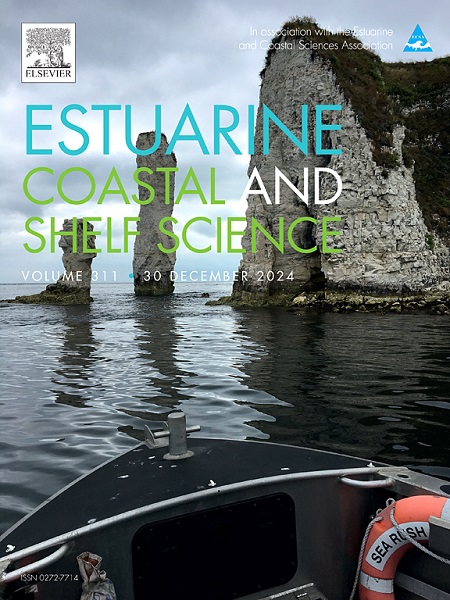Importance of the microphytobenthos in the foodweb of tropical mudflats
IF 2.6
3区 地球科学
Q1 MARINE & FRESHWATER BIOLOGY
引用次数: 0
Abstract
Mudflats are peculiar dynamic ecosystems, at the interface of terrestrial and aquatic ecosystems, known for their large carbon storage ability. Mudflats also provide food source and constitute important habitats for photosynthetic organisms and consumer communities. Tropical mudflats are highly unstable and only temporarily accessible to either aquatic or aerial consumers because of tides, which raises the question of the trophic functioning of these habitats. Their importance in terms of trophic resources for species that temporarily feed there as well as the carbon origin of mudflat foodweb deserve to be explored. This was assessed, over a year in a tropical mudflat (French Guiana) at two sites (Sinnamary and Awala-Yalimapo), from primary producers to predators, using stable isotope ratios (δ13C and δ15N) as a proxy of their diet. The results showed that trophic interactions were similar in each site and only a few influences of the seasons were detected for the meiofauna (Halomonhystera sp.), and fish (Gobionellus oceanicus only in Sinnamary). The microphytobenthos constituted the dominant primary source incorporated by the meiofauna, which in turn was an important one for the fish. The three shorebird species depended mainly on the microphytobenthos, green algae and Tanaidacea and secondarily on the meiofauna. The two resident fishes relied on the same sources as the birds but incorporating higher proportions of the meiofauna taxa (Copepoda, Nematoda, and Ostracoda). The analyses of species niche overlaps between the three shorebirds and the two resident fish demonstrated that they might compete for resources. The results are discussed in relation to the central place of the MPB as a direct or indirect source of carbon for the vast majority of organisms present on these tropical mudflats, whether transient or resident species.
求助全文
约1分钟内获得全文
求助全文
来源期刊
CiteScore
5.60
自引率
7.10%
发文量
374
审稿时长
9 months
期刊介绍:
Estuarine, Coastal and Shelf Science is an international multidisciplinary journal devoted to the analysis of saline water phenomena ranging from the outer edge of the continental shelf to the upper limits of the tidal zone. The journal provides a unique forum, unifying the multidisciplinary approaches to the study of the oceanography of estuaries, coastal zones, and continental shelf seas. It features original research papers, review papers and short communications treating such disciplines as zoology, botany, geology, sedimentology, physical oceanography.

 求助内容:
求助内容: 应助结果提醒方式:
应助结果提醒方式:


